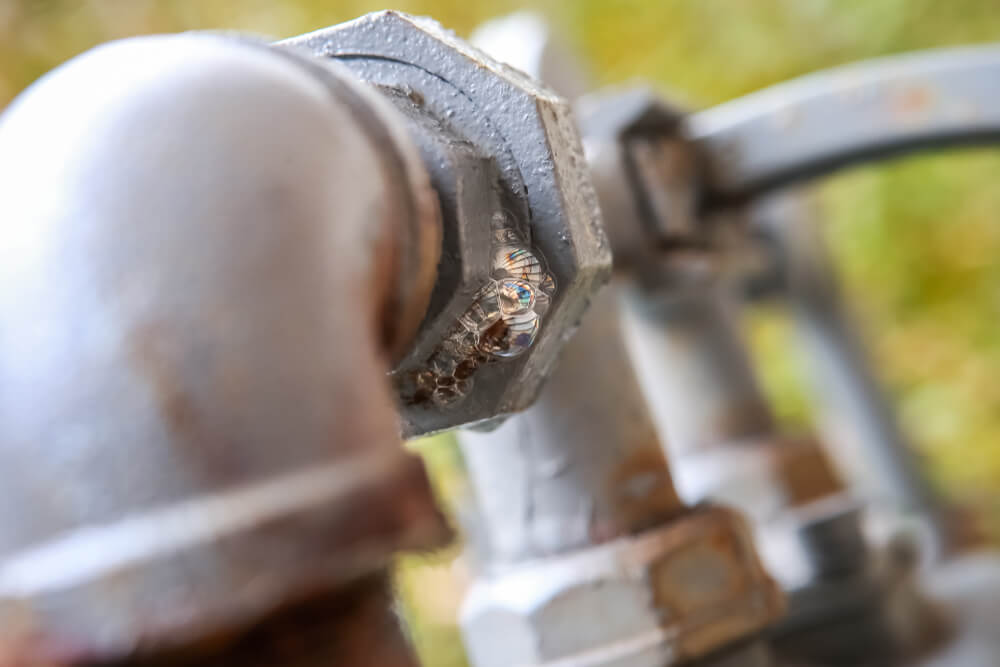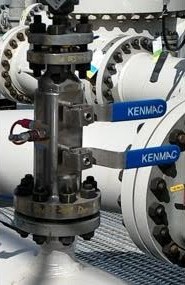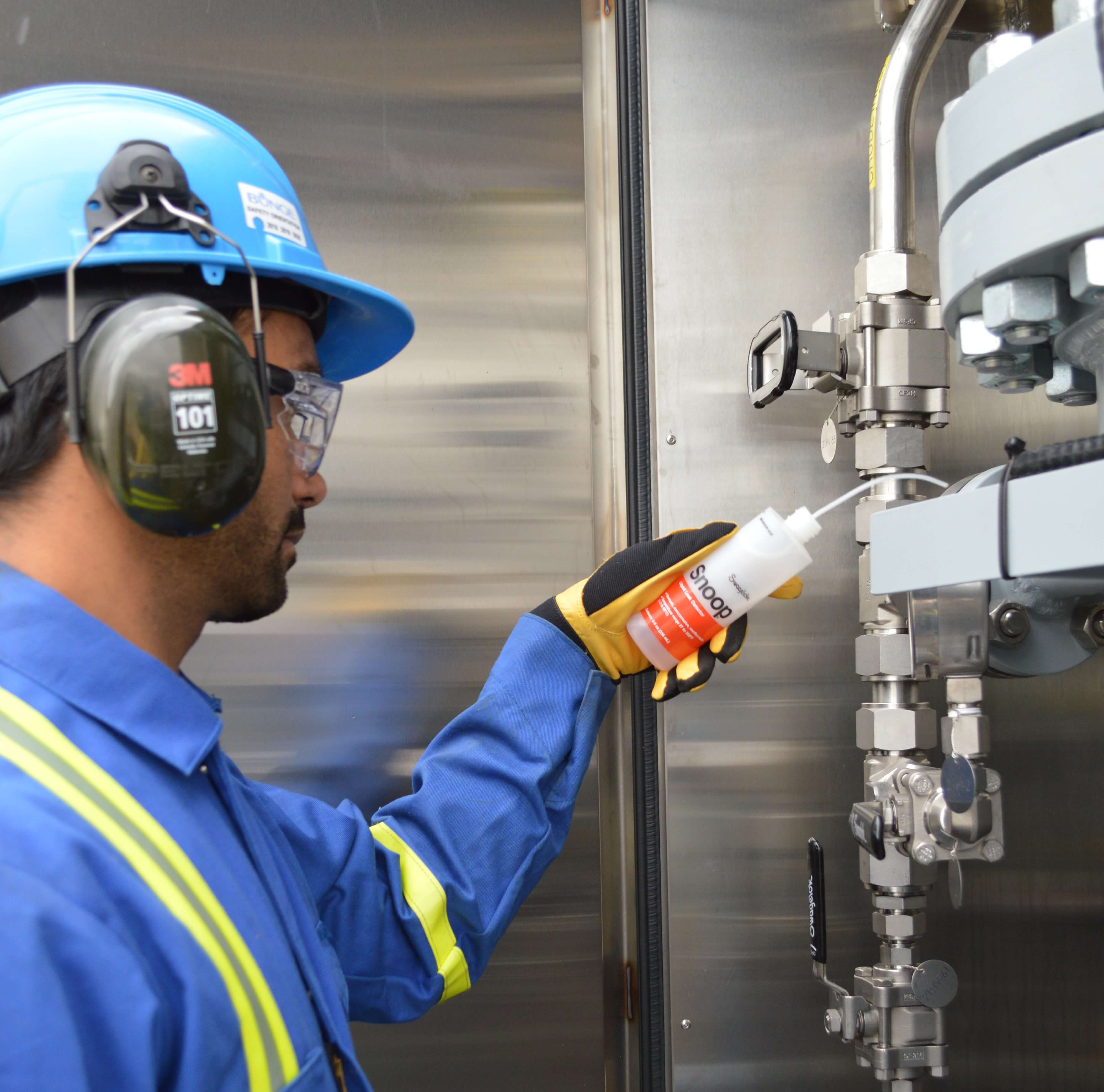Best Practices for Your Fugitive Emissions Management Program in Alberta Upstream Operations.
 In recent years, fugitive emissions have become a focus of Alberta's greenhouse gas reduction strategy, resulting in stricter regulations for the Alberta oil and gas industry. As a result, one of the requirements for all upstream operations is to have a documented fugitive emissions management program (FEMP).
In recent years, fugitive emissions have become a focus of Alberta's greenhouse gas reduction strategy, resulting in stricter regulations for the Alberta oil and gas industry. As a result, one of the requirements for all upstream operations is to have a documented fugitive emissions management program (FEMP).
A FEMP can do more for Alberta upstream facilities than just ensuring compliance—reducing fugitive emissions saves money and creates a safer, more efficient facility. Here is our best practices guide for fugitive emissions management programs, including the most common sources of fugitive emissions, the elements of a FEMP, and common equipment for detecting fugitive emissions.
Any location where multiple components join is a potential leak point and source of fugitive emissions. The following components are common sources of fugitive emissions:
Components can produce fugitive emissions because they wear out over time, are improperly installed, or become loosened from vibration. If components are installed, so they are under a load, the stress can damage them over time, causing leaks and eventual failure.

Because valves are responsible for 60% of all fugitive emissions, valve selection is one of the most important ways to ensure compliance with standards and regulations. Unfortunately, many fugitive emissions problems occur because the wrong valve was selected for an application or valves were installed incorrectly. Facilities experiencing fugitive emissions from valves can benefit from bringing in a third-party expert to help identify valves that should be replaced or upgraded to more efficient designs.
A fugitive emissions management program must include several elements according to Directive 060, including:
Some best practices for these FEMP elements are described below.
 Preventive maintenance practices to reduce or prevent fugitive emissions might include checklists used by operators during inspections, regularly scheduled support, and programs or standard operating procedures that incorporate preventive maintenance practices.
Preventive maintenance practices to reduce or prevent fugitive emissions might include checklists used by operators during inspections, regularly scheduled support, and programs or standard operating procedures that incorporate preventive maintenance practices.
Preventive maintenance practices that can help reduce fugitive emissions:
Accessible components, especially operating pump and compressor seals and pressure relief devices, should be inspected for leaks frequently. Inaccessible components may need annual inspections. Unsafe to monitor components will be inspected when it is determined safe to perform the inspections. Reinspections for leaks that are minimized or repaired should be conducted after the minimization or repair action.
A fugitive emissions management program must document the methods and equipment used for surveys and screenings.
The most basic type of screening is a simple audio, visual, and olfactory (AVO) inspection. In an AVO inspection, the operator checks for leaking components identified by sight, sound, or smell. When performing AVO inspections, check for:
 Snoop testing is an easy, low-tech method to detect smaller leaks. In a Snoop test, the inspector sprays the area where a leak is suspected with a soapy solution. If a leak is present, visible bubbling will occur. However, Snoop tests are less effective at detecting leaks from equipment that is difficult to access, has moving parts, or has a very high or low surface temperature that can cause the Snoop solution to freeze or boil.
Snoop testing is an easy, low-tech method to detect smaller leaks. In a Snoop test, the inspector sprays the area where a leak is suspected with a soapy solution. If a leak is present, visible bubbling will occur. However, Snoop tests are less effective at detecting leaks from equipment that is difficult to access, has moving parts, or has a very high or low surface temperature that can cause the Snoop solution to freeze or boil.
A fugitive emissions survey route should be planned to ensure all areas are surveyed. The most efficient way to do this is usually to follow the path of the product from inlet to outlet. Alternatively, the survey can be conducted by individual process units.
Weather conditions like rain and wind can make fugitive emissions detection more complex and should be avoided when surveying. For example, wind can dissipate plumes more quickly, making them harder to detect, and rain can damage instrument sensors.
When components are close together, it can be difficult to identify the exact location of a leak. Surveyors should take time to ensure that the correct source is identified and use Snoop testing to confirm the leak location if possible.
Depending on the type of site and equipment, fugitive emissions surveys must be performed one to three times per year. Surveys can be performed in-house or by a third party, but there are advantages to using a third party. For example, third-party surveying:
When leaks are discovered that exceed the emissions requirements for the type of equipment that is leaking, they must be repaired. Minor repairs can be completed fairly quickly—but only after the system is depressurized. It can be very dangerous to try to make a repair when the system is under pressure.
Leaks pending repair must be tracked, usually by physical tagging. Tags should either be attached directly to the leaking component or in a position where it is easy to identify the leak’s location. Tags should be uniquely numbered, weather-resistant, highly visible, and securely hung using plastic zip ties or corrosion-resistant wire.
A FEMP must include a continuous improvement procedure that evaluates program performance. It should specify what data is collected, how data is reviewed, and how data reviews will inform improvements to the FEMP.
Some indicators that may be used to evaluate FEMP performance and determine if any changes are needed are:
By tracking these or other metrics, both the strengths and weaknesses of the FEMP can be identified, and adjustments can be made to the procedure to fill any gaps. It is also important to share data and lessons learned to be applied throughout the entire process.
AVO inspections are useful for quickly identifying more obvious leaks, but more sensitive equipment is necessary to detect smaller leaks. Several technologies are available to make surveys more effective but optical gas imaging with ultrasound testing equipment is the most commonly used method.
Optical gas imaging (OGI)—the Alberta standard for compliance with Directive 060—involves the use of cameras to provide images and video of leaks that are invisible to the human eye. They are beneficial when an organic vapour analyzer is not practical, such as when components are difficult to access because they can detect fugitive emissions from a distance. They can also be used to quantify the emissions rate. An OGI camera’s effectiveness depends on several factors, including the distance from the leak source, atmospheric conditions, thermal gradient, and surveyor training.
Operators who perform fugitive emissions surveys and screenings must be trained to use the equipment effectively and should have experience detecting, recording, and reporting fugitive emissions. Training should include:
Edmonton Valve & Fitting can help support your fugitive emissions management program by providing leak detection services, hose evaluations, and emission-reducing valves, fittings, and other components with our optical gas imaging and ultrasound equipment. One of our Field Advisors can perform an onsite evaluation of your operation to identify potential leak points and components that can be upgraded or replaced to reduce fugitive emissions. We can then recommend specific Swagelok components that will offer the maximum benefit to your facility.
Swagelok valves passed the API Low-E test for fugitive emissions without modification. Furthermore, all our products are backed by Swagelok’s industry-leading Limited Lifetime Warranty. By using Swagelok valves and components, you exceed the strictest standards in the industry and ensure your people and equipment are protected by the most advanced components available.

Lorem ipsum dolor sit amet, consectetur adipiscing elit. Suspendisse tempor nisi ut vehicula commodo.
Learn More →
Lorem ipsum dolor sit amet, consectetur adipiscing elit. Suspendisse tempor nisi ut vehicula commodo.
Learn More →
Lorem ipsum dolor sit amet, consectetur adipiscing elit. Suspendisse tempor nisi ut vehicula commodo.
Learn More →
Lorem ipsum dolor sit amet, consectetur adipiscing elit. Suspendisse tempor nisi ut vehicula commodo.
Learn More →
Lorem ipsum dolor sit amet, consectetur adipiscing elit. Suspendisse tempor nisi ut vehicula commodo.
Learn More →
Lorem ipsum dolor sit amet, consectetur adipiscing elit. Suspendisse tempor nisi ut vehicula commodo.
Learn More →
Lorem ipsum dolor sit amet, consectetur adipiscing elit. Suspendisse tempor nisi ut vehicula commodo.
Learn More →
Lorem ipsum dolor sit amet, consectetur adipiscing elit. Suspendisse tempor nisi ut vehicula commodo.
Learn More →
Lorem ipsum dolor sit amet, consectetur adipiscing elit. Suspendisse tempor nisi ut vehicula commodo.
Learn More →Swagelok is a $2B developer of industrial fluid system products and services. Swagelok Edmonton is an authorized Swagelok Sales and Service Centre serving Canadian companies in clean energy, chemical, oil and gas, and other industries. Proud member of the Canadian Council for Aboriginal Business.
Tel: 780-437-0640.
Swagelok Edmonton values your privacy. This website uses cookies to enhance user experience and analyze performance and traffic. Our policies are posted here.
Login/Register | Privacy | Safe Selection | Centre Locator | Sitemap | Legal
© 2012-2024 Edmonton Valve & Fitting Inc.